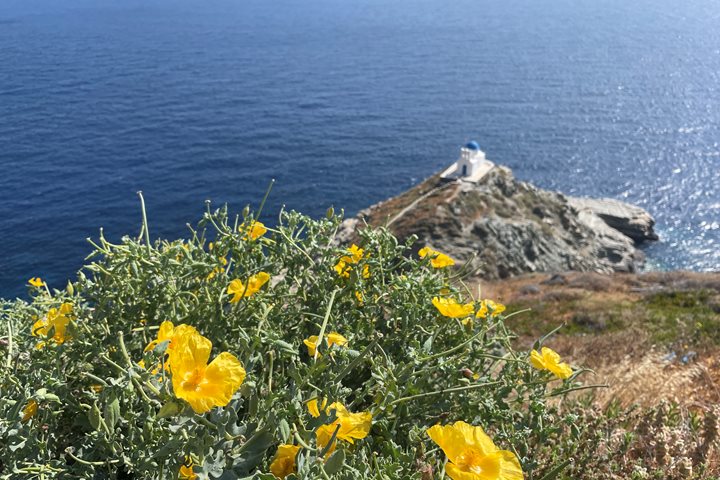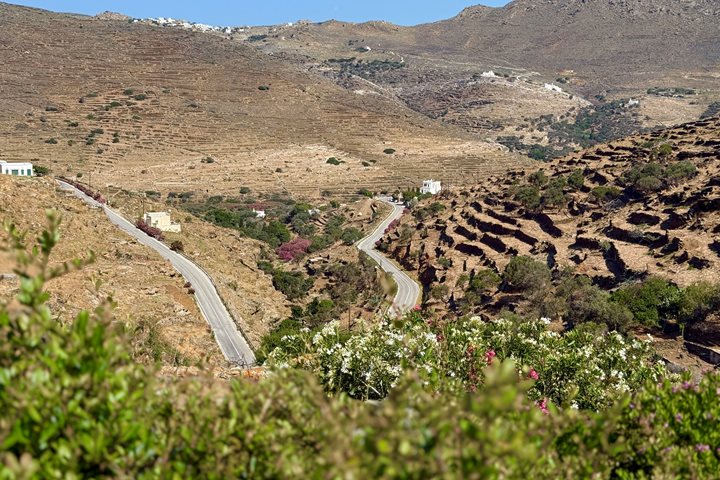Our exploration of the spectacular island of Santorini started early this morning. Still fresh in our minds when we woke up was last night’s spectacular view of the majestic caldera, flooded with the silver light of a bright Aegean moon.
We took a short boat ride to the port of Athinios, filled with anticipation and excitement for all the wonders we were about to see. From the port we boarded buses and headed to the charming village of Oia, at the northernmost part of the island. Oia provided us with breathtaking scenery, with its white-and-blue houses drenched in the strong sun – a mosaic of cubist forms hanging from the nearly vertical cliffs.
We arrived at the bustling village of Pyrgos just in time for a traditional Greek lunch. We enjoyed a variety of meze, which is a selection of small plates, local wine, and traditional ravani, a delicious syrup cake. The food and excellent company made it the perfect rest stop in the middle of a busy day.
After lunch we went to the Museum of Prehistoric Thera, where we marveled at the magnificent finds from the Minoan town of Akrotiri. The daily objects of the ancient Minoans, including a magnificent gold figurine of an ibex, prepared us for our visit to the site itself.
Akrotiri is sometimes described as the Pompeii of Greece, because it is an ancient town that was frozen in time when the Thera volcano erupted with the force of multiple nuclear bombs in the middle of the 17th century B.C. The volcanic material that covered the town preserved a snapshot of life more than 3,600 years ago. Some archaeologists believe the eruption of Thera and the subsequent destruction of the Minoan civilization may have survived in Greek mythology as the legend of Atlantis.
We ended our amazing day with a refreshing swim in the crystal-clear blue waters of the Aegean, under the majestic shadow of the Sea Cloud.









